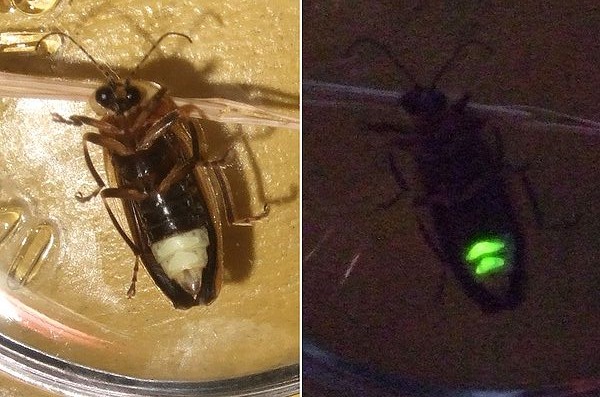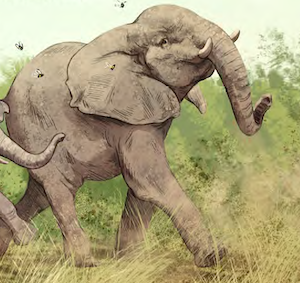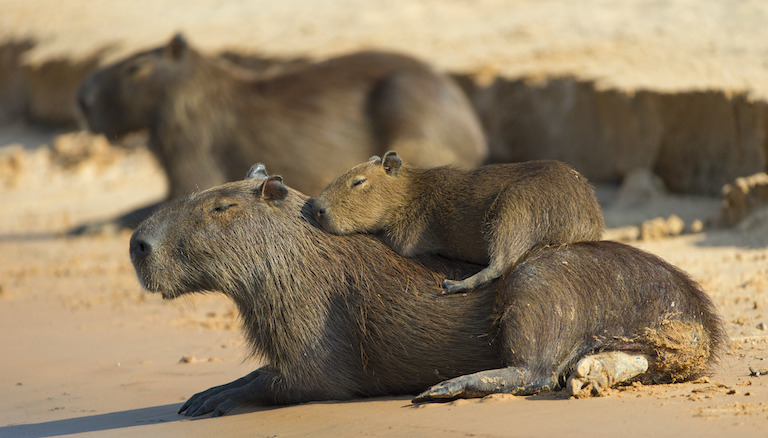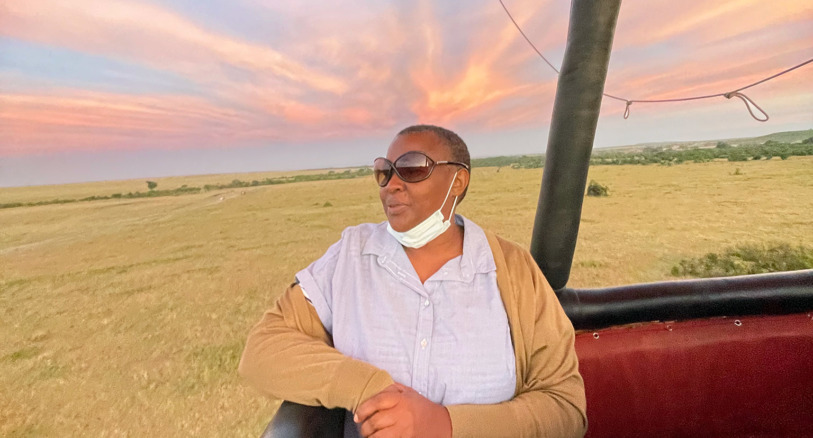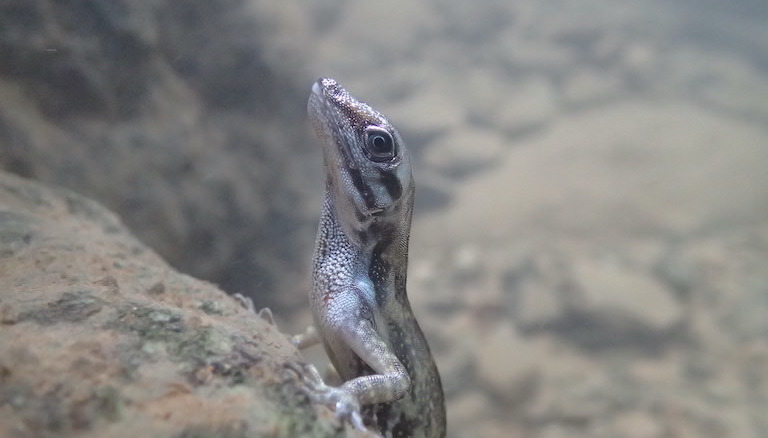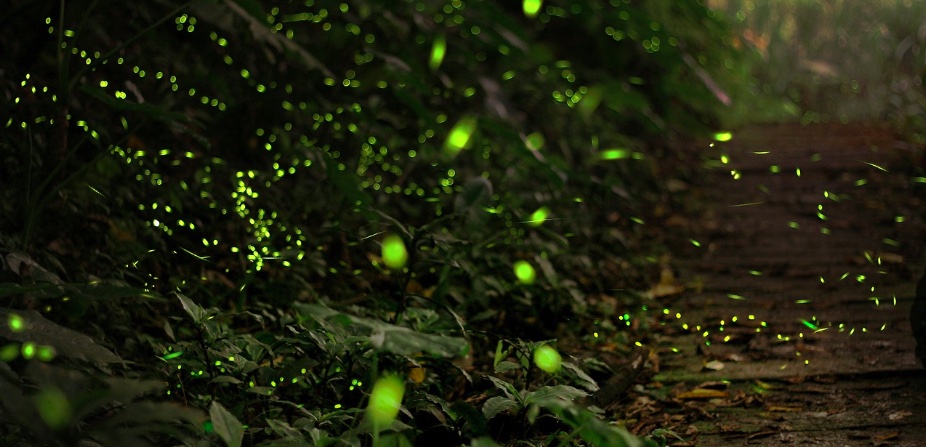
What is lighting up the night sky?
A brief flash of light in the night sky winks on and off. What was that?! A tiny star? A pixie? BLINK! There goes another one!
These blinks of light have enchanted people for millions of years. They are fireflies.
Fireflies are not stars or pixies … actually they aren’t flies either. Fireflies are soft-bodied, light-emitting insects. Specifically they are beetles classified under the family Lampyridae.
There are about 2,000 firefly species in the world. Most of them can emit light through a chemical reaction that takes place in light organs located on their abdomen. This kind of light is called bioluminescence. The light is produced when oxygen reacts with chemicals in the presence of an enzyme called luciferase. When this happens, the light organs begin to flash.
Each firefly species has different intensities and patterns of light. Scientists think that fireflies can control the frequency and intensity of flashing by controlling the oxygen levels that enter their light organs.
Fireflies are found all over the world, including on the island of Sri Lanka. In Sri Lanka, the first major study of fireflies was carried out by British naturalists in the 18th century. There was not much more research on the fireflies of Sri Lanka for another 200 years. But thanks to recent work, we know now that Sri Lanka is home to 16 firefly species.
Dammika Wijekoon and Hemantha Wegiriya of the University of Ruhuna rebooted the study of Sri Lankan fireflies in 2009. They have made many discoveries since then.
They found Luciola nicolleri, a firefly not seen since its description in 1922. And they observed Curtos costipennis, a firefly species not previously known to be in Sri Lanka.
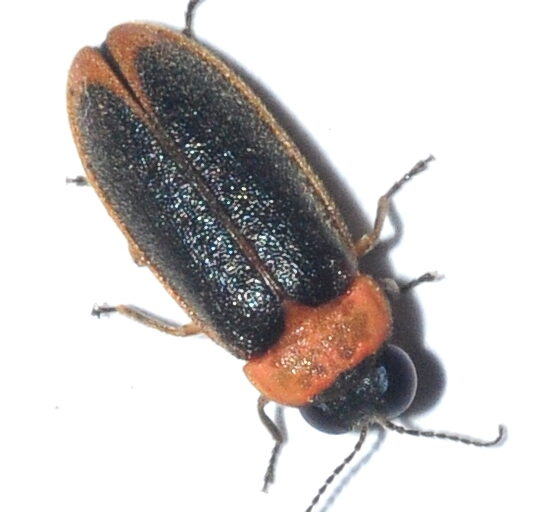
Introducing the glowworm …
There is another glowing creature in Sri Lanka that does not fly and has a worm-like appearance. This is the glowworm. Folklore says that if stung by glowworms, treatment would require mud from the depths of the ocean and stars from the sky.
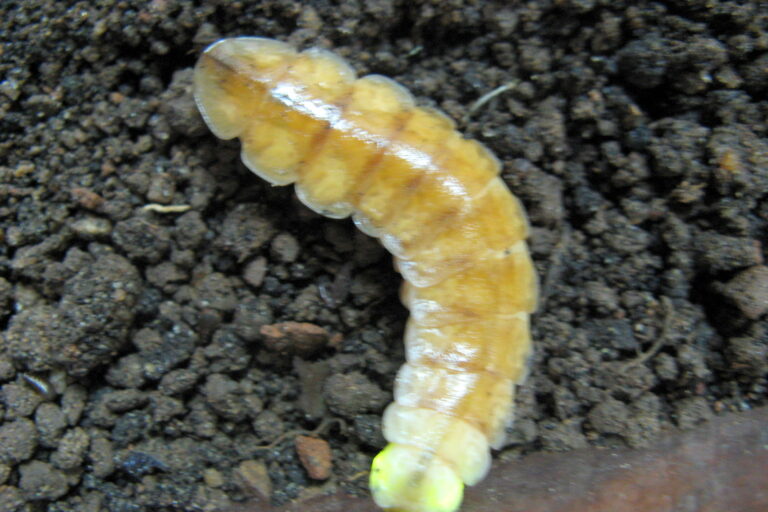
Are glowworms actually dangerous to people? Shashi Prabath, a teacher at Vidyaloka Science Institute, wanted to find out. How did that work out for him? “I tried to get bitten by one of them, but the glowworm didn’t bother initially, However, after I applied slime on my finger, I did get bitten. But it was like an ant’s bite and only a little pain, which reduced after a few hours,” Prabath said.
Why would slime cause a glowworm to bite? Glowworms mainly feed on small snails and slugs. They inject venom to immobilize the prey. Glowworms also have a neurotoxic venom similar to that of some snakes, but their mouths are very small. The amount of venom released is very small, and not at all dangerous to humans.
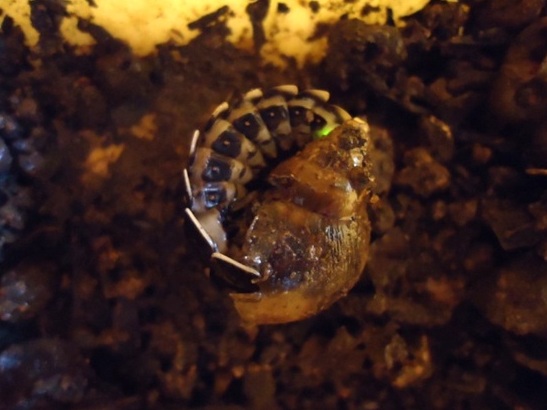
How are glowworms different from fireflies, you might ask? They are not, it turns out. Glowworms are baby fireflies! They are the larval stage of the firefly life cycle – the firefly equivalent of caterpillars, which are the larval stage of moths and butterflies.
How are fireflies doing?
Fireflies are disappearing from many areas where they used to live. When there are too many outdoor lights, fireflies fail to communicate with each other. This disrupts their mating. Fireflies need moisture, but the soil is getting increasingly dry in some areas. Pesticide use is another factor that contributes to the decline of fireflies.
Dammika Wijekoon is a member of the IUCN Species Survival Commission Firefly Specialist Group, a group of firefly experts who study fireflies and try to conserve them.
To highlight the need for action, the first weekend of July is declared World Firefly Day by the International Firefly Network.
Viewing fireflies is an amazing experience. Maybe you have fireflies near where you live. And if you don’t, you may want to go on a firefly tourism adventure one day.
This story was adapted for Mongabay Kids by David Brown. It is based on an article by Malaka Rodrigo, published on Mongabay.com:

